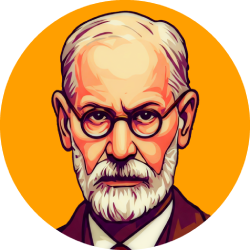As we reach the end of this module on the fundamentals of psychoanalysis, it is essential to take a break to reflect on the path taken here. Psychoanalysis, as theory and practice, has been fundamental to our understanding of human behavior, psychic processes and intersubjective relationships. In this article, we will recap the founding milestones of psychoanalysis, exploring their contributions to the field of psychology and their relevance in everyday life.
Introduction to Psychoanalysis: Basic Concepts
THEpsychoanalysisDeveloped by Sigmund Freud, it is a theory that seeks to understand the human mind, especially the unconscious processes that influence our behavior. It is based on the idea that our child experiences, family relationships, and internal conflicts play a crucial role in the formation of our personality and the development of psychological symptoms. Concepts such as ID, ego and superego are central to understanding these processes.
ID represents primitive instincts and basic needs, while the ego is the part of the personality that deals with reality, seeking to balance the demands of ID with the expectations of society. The superego, in turn, incorporates internalized moral standards, guiding our sense of right and wrong. This interaction between ID, ego and superego is essential to understanding how we adapt to the world around us.
Psychossexual Development: Phases of Childhood
Freud’s psychosexual theory of psychossexual development proposes that personality forms through a series of phases, each associated with a specific erogenous zone. From the oral phase, characterized by satisfaction through the mouth, to the genital phase, where the focus is on mature sexual intercourse, each step plays an important role in psychic development. Fixing or regression to any of these phases can lead to specific personality characteristics or dysfunctional behavioral patterns.
For example, someone who has gone through an unsatisfactory oral phase can develop behaviors such as smoking or eating in excess, seeking to compensate for the lack of oral childhood satisfaction. This understanding of the phases of psychosexual development helps us better understand the roots of certain behaviors and standards we observe in ourselves and others.
The role of the unconscious
The unconscious, one of the most revolutionary concepts of psychoanalysis, refers to the part of the mind that operates outside consciousness, influencing our thoughts, feelings, and actions in ways that we are not aware. Dreams, linguistic lapses (such as the “flawed act”) and neurotic symptoms are examples of how the unconscious manifests itself in our daily lives.
Understanding the role of the unconscious allows us to recognize that our choices and behaviors are not always the result of conscious decisions, but also of underlying psychic forces. This has profound implications for how we address issues such as motivation, creativity and internal conflict resolution.
Practical application of psychoanalysis
Psychoanalysis is not just a theory; It also offers a set of therapeutic practices designed to help individuals understand and deal with their internal conflicts. Psychoanalytic psychotherapy, for example, involves the use of techniques such as free association and dream analysis to explore the patient’s unconscious.
In addition, the principles of psychoanalysis are applied to various fields, from education to advertising, helping to better understand human motivations and how they can be influenced. In everyday life, understanding psychoanalytic concepts can make us more empathic and capable of navigating the complexities of human relations.
In conclusion, the recapitulation of the founding milestones of psychoanalysis offers us a valuable opportunity to reflect on human nature and the psychic processes that shape us. By exploring these concepts, we can gain deep insights on ourselves and others, which can lead to more significant relationships and a more authentic life.


